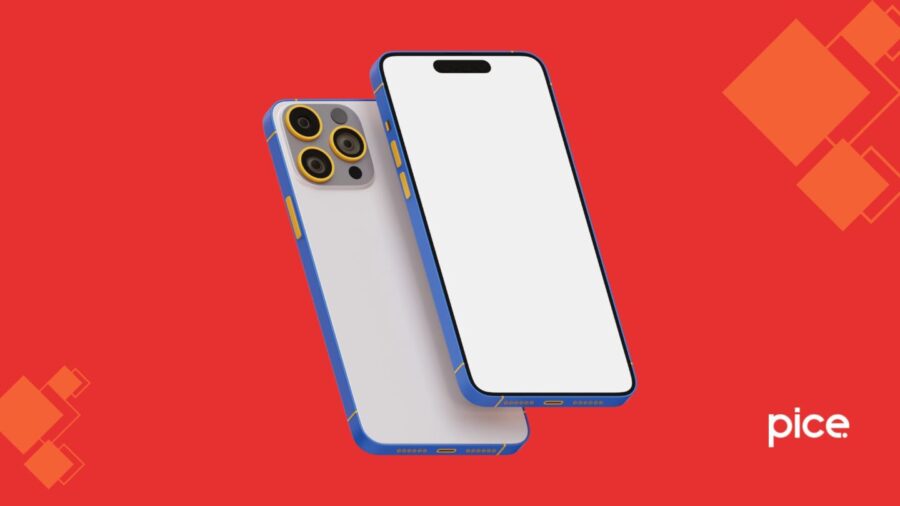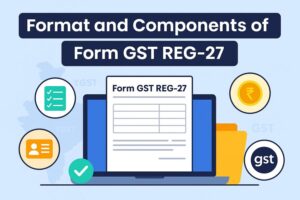GST on iPhones
- 4 Sep 24
- 10 mins

GST on iPhones
Key Takeaways
- The GST rate on all mobile phones, including iPhones, is 18%, which has led to a standardized but higher pricing structure across India.
- The introduction of GST replaced the fragmented VAT regime, simplifying the taxation process but increasing the overall tax burden on mobile phones.
- GST on mobile phones is applied differently depending on whether the transaction is intra-state (SGST and CGST) or inter-state (IGST), ensuring consistent taxation across regions.
- Composite supply rules under GST mean that accessories sold with mobile phones are taxed at the same rate as the principal item, affecting the total cost.
- Businesses can claim input tax credits on GST paid for mobile phones if used for business purposes, helping reduce overall tax liabilities.
The introduction of the Goods and Services Tax (GST) has significantly impacted the pricing and taxation of mobile phones in India. With the shift from the pre-GST regime, which included various indirect taxes like VAT, excise duty, and service tax, to a single, unified tax structure, the mobile phone industry has experienced considerable changes in its supply chain, pricing strategies, and tax compliance.
How Did the Price of iPhone Change Due to GST?
The price of iPhones in India underwent noticeable changes after the implementation of GST. Before GST, the taxation on mobile phones was fragmented, with different states imposing varying VAT rates and central excise duties, leading to inconsistencies in mobile phone prices across the country. The introduction of a uniform GST rate brought a level of consistency to the pricing of mobile devices like iPhones.
Under the pre-GST regime, the VAT rates on mobile phones varied between 5% to 15%, depending on the state. Additionally, excise duty and other indirect taxes, such as central sales tax (CST) and service tax, were levied at various stages of the supply chain. This cumulative tax burden contributed to higher prices for mobile phones, particularly for high-end smartphones like the iPhone.
With the implementation of GST, the tax on mobile phones was standardized at 12%, later increased to 18%. This shift led to an increase in the overall tax burden on mobile phones, especially for models like the iPhone, which are positioned in the premium segment of the market. Consequently, the sale price of iPhones rose, affecting consumer purchase decisions, particularly for those buying phones without exchange offers or discounts.
Despite the initial increase in prices, the uniform GST rate simplified the taxation system and reduced the cascading effect of taxes, leading to more transparent pricing. However, the rise in GST rates also meant that the cost of purchasing iPhones, along with mobile accessories such as chargers, earphones, and power banks, saw a notable uptick.
GST on Mobile Phones – Types of GST Applicable
When SGST & CGST or IGST is Applied – Inter and Intra State Tax
GST is a comprehensive tax system that subsumes various indirect taxes into a single tax regime. For mobile phones, GST is applied differently depending on whether the transaction is intra-state or inter-state. In an intra-state transaction, where the supplier and buyer are located in the same state, both State GST (SGST) and Central GST (CGST) are levied. Each of these taxes is applied at 50% of the total applicable GST rate, ensuring that the tax burden is shared equally between the state and central governments.
For example, if a mobile phone is sold within the same state and the applicable GST rate is 18%, SGST and CGST would each be 9%. This means that for every sale within the state, the state government and central government each receive 9% of the tax collected on the sale price of the mobile phone.
💡If you want to pay your GST with Credit Card, then download Pice Business Payment App. Pice is the one stop app for all paying all your business expenses.
In the case of inter-state transactions, where the supplier and buyer are located in different states, the Integrated GST (IGST) is applied. IGST combines both the central and state tax components, which is then divided between the central government and the state where the consumption occurs. This system simplifies the taxation of inter-state transactions and helps in maintaining consistency in taxation rates across states.
The introduction of GST has streamlined the tax structure for mobile phones, reducing the complexities associated with the VAT regime. However, it has also increased the importance of compliance for mobile phone dealers and manufacturers, as they must correctly apply SGST, CGST, or IGST based on the nature of the transaction.
Nature of Composite Supply
Composite supply under GST refers to a situation where two or more goods or services are supplied together as part of a single transaction, and the entire supply is taxed as if it were a single supply. In the context of mobile phones, composite supply could involve the sale of a mobile phone along with accessories like a charger, earphones, or a mobile case.
The nature of composite supply is significant because it determines how GST is applied to the entire transaction. For instance, if a mobile phone and its accessories are sold together as a single package, the entire supply is taxed at the GST rate applicable to the principal supply, which in this case, is the mobile phone. This means that the accessories are taxed at the same rate as the mobile phone, even if they would ordinarily fall under a different tax rate if sold separately.
This approach simplifies the taxation process for businesses and ensures consistency in pricing for consumers. However, it also means that businesses must carefully manage their invoicing and tax calculations to ensure compliance with GST rules, particularly when dealing with composite supplies.
What is the Value of Supply to Compute GST on iPhones?
The value of supply is a critical factor in computing GST on iPhones and other mobile phones. The value of supply under GST is determined by the transaction value, which is the price actually paid or payable for the goods or services, provided the buyer and seller are not related and the price is the sole consideration.
For iPhones, the value of supply includes not just the base price of the phone but also any additional charges such as packing charges, shipping fees, and any applicable discounts or exchange offers. If the phone is sold with accessories or as part of a promotional offer, the total value of all items included in the sale is considered for calculating GST.
In some cases, additional components like social welfare surcharge, which is levied on the import of certain goods, may also be included in the value of supply for imported iPhones. The inclusion of all these elements ensures that GST is applied comprehensively to the entire transaction, providing a clear and transparent tax structure.
For mobile phone dealers and businesses, accurately determining the value of supply is crucial to avoid any discrepancies in tax calculation and to ensure that the correct GST amount is charged to customers. This requires careful attention to the details of each transaction, including the sale price, any applicable discounts, and the nature of the goods or services supplied.
What is the GST Rate on Mobile Phones?

The GST rate on mobile phones has been a topic of discussion since the implementation of the GST regime. Initially, the GST rate on mobile phones was set at 12%, which was already higher than the previous VAT rates applicable in many states. However, in March 2020, the GST rate on mobile phones was increased to 18%, aligning it with the rates on several other electronic goods.
This increase in the GST rate led to a rise in the cost of mobile phones across the board, affecting both feature phones and high-end smartphones. The impact was felt most acutely in the premium segment, where renowned phone brands like Apple saw a noticeable increase in their product prices. For consumers, this meant higher prices for mobile phone purchases, whether buying online or from physical stores.
The GST rate of 18% applies uniformly across all types of mobile phones, whether they are feature phones, smartphones, or even basic landline phones. This uniform rate has simplified the tax structure for the mobile phone industry but has also increased the overall tax burden on both consumers and businesses.
For businesses, the increased GST rate has also affected the cost structure in the supply chain. The cost of manufacturing, which includes the cost of materials, labor, and other inputs, has seen a rise due to the higher tax rate. Additionally, businesses must also account for the GST impact on mobile accessories, which are often sold alongside phones. The higher tax rate on mobile phones has prompted many businesses to explore ways to manage their tax liabilities, including better utilization of input tax credits and more efficient supply chain management.
In conclusion, while the GST regime has brought about uniformity and simplicity in the taxation of mobile phones, it has also led to higher prices and increased tax compliance requirements for businesses in the mobile phone industry. The impact of GST on mobile phones, from the change in iPhone prices to the current GST rates, underscores the need for businesses and consumers alike to adapt to the evolving tax landscape.
 By
By 

















